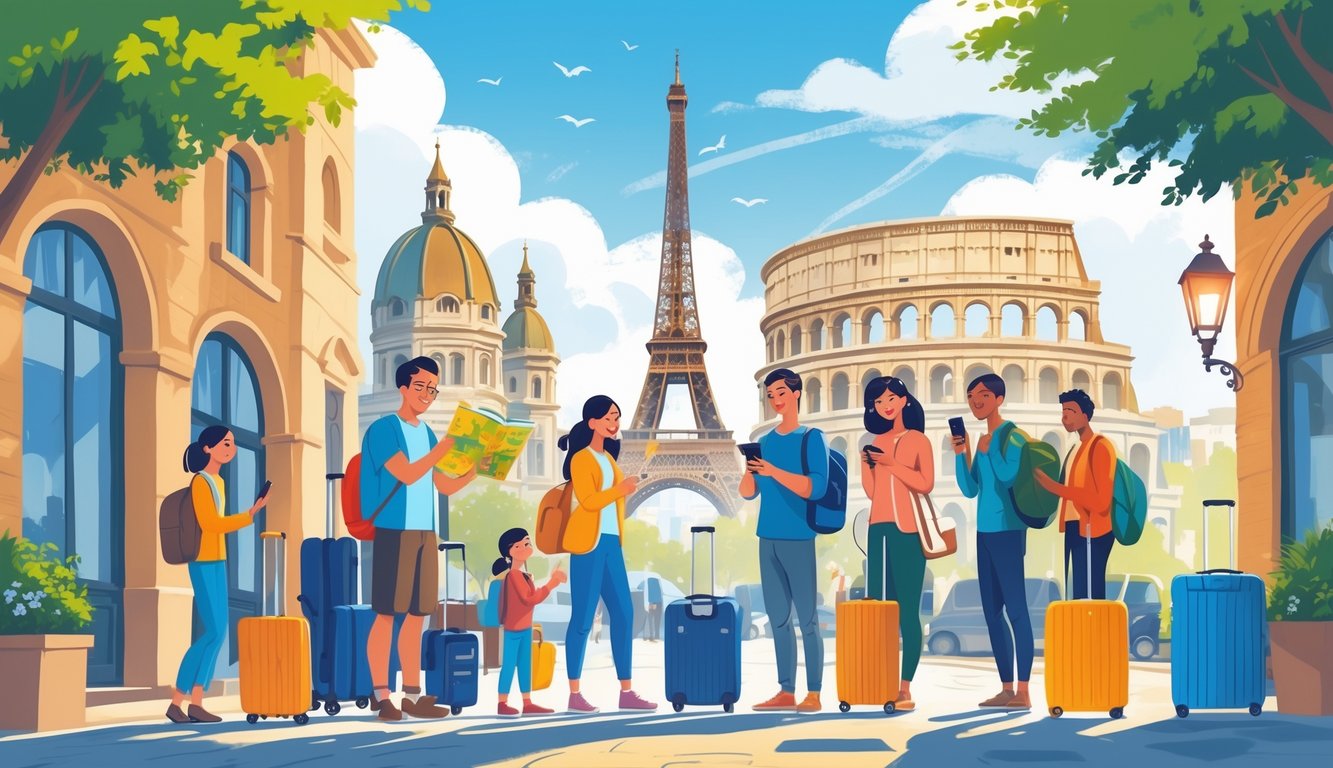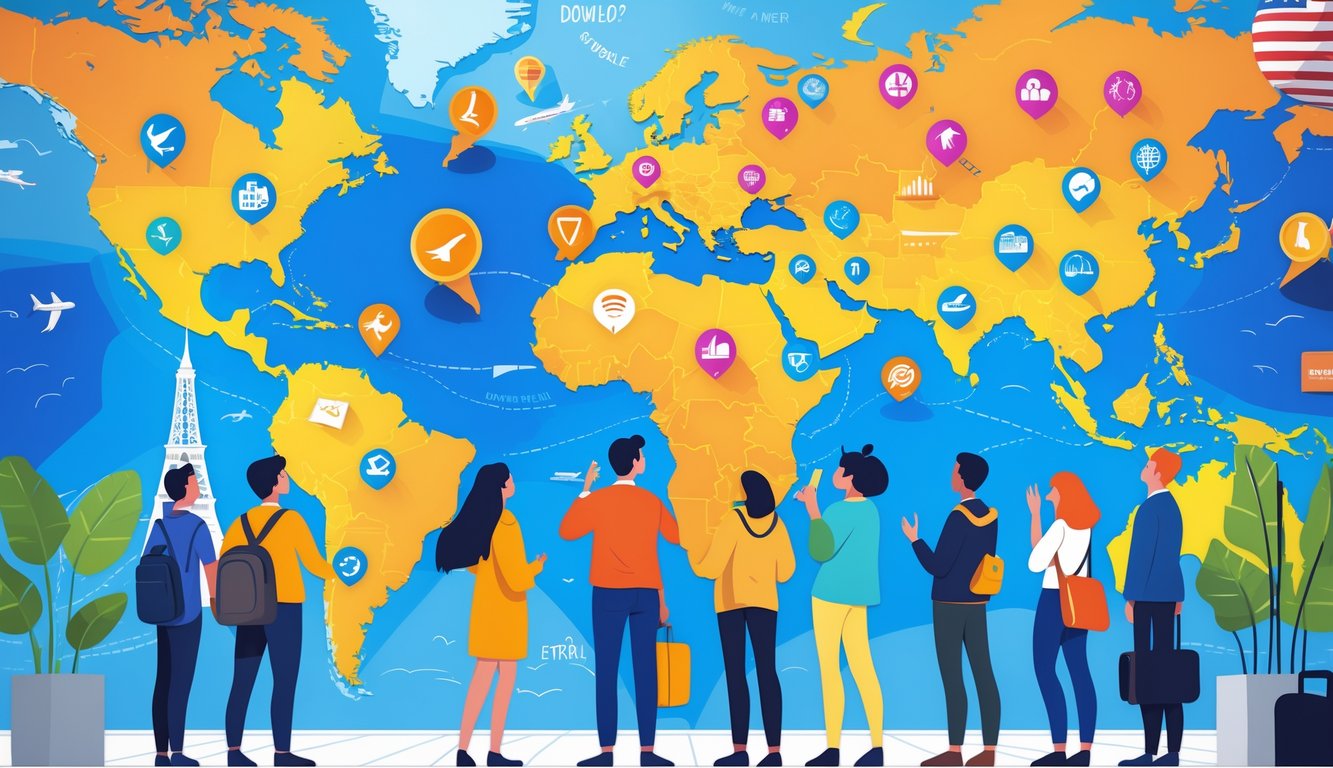
Honestly, I don’t know why Americans keep stampeding into Paris or the Amalfi Coast like Instagram is handing out free gelato. It’s wild—some of the best Europe travel deals are just sitting there, totally ignored, not even making it onto the Kayak “hot deals” page. The dollar’s up again (shout out to David Landsel at Travel + Leisure for the stat—up 7% against the euro, which is, what, a free pastry every other day?), so a cappuccino in Porto or a shockingly nice Krakow hotel feels like a clearance sale. But no, I still meet people convinced Europe is basically a gated community unless you’re a Rockefeller. Have you actually looked at those Europe packages under $700 on Expedia? I didn’t believe it either. Flights, three nights, and it’s less than my last internet bill. Who’s running these numbers?
People are so obsessed with London, Paris, Rome—like there’s a law about it? Meanwhile, Ljubljana is basically giving away hotel rooms, and Budapest’s prices nosedive after May but, sure, let’s all fight for an Airbnb in Barcelona because “Eastern Europe is hard.” What does that even mean? Airfare drops, those weirdly cheap multi-ride rail passes (I saved $200 in June, not even trying), nobody notices. I only started paying attention because I missed a connection in Warsaw and realized everywhere nearby cost half as much and, bonus, I wasn’t trampled by selfie sticks.
Why U.S. Travelers Miss the Best Travel Deals in Europe

Do people really want to hear this? No. The best cheap flights? Gone instantly, snapped up by people who just book and don’t overthink it. Indecision is a plague—was it Spain? Greece? That city everyone posts at sunset? Skyscanner says 41% of us get stuck in destination limbo. Meanwhile, the deal-hunters’ cousin already scored $400 roundtrips. Exchange rates do their own thing, sometimes quietly saving you cash, but you’ll only notice when you’re standing in a bakery in Paris, squinting at your receipt and wondering if your croissant just cost $12.
Common Booking Mistakes
Three browser tabs, one for deals, one for reviews, one for the euro-dollar exchange rate (which, why am I even watching it like it’s Bitcoin?). Main problem? People overthink, read too many “how to travel Europe cheap” posts, and then—poof—hostel deals vanish. Deloitte’s report says by the time you finally commit, prices have jumped and the so-called “cheap” window is gone. Probably while you were doomscrolling or microwaving leftovers.
I used to think fare alerts were genius. Nope. Missed three error fares literally because I was arguing in a group chat about whether to take the train or bus. I swear, people who just book without thinking always get the deals.
Waiting for the “lowest price” is a trap. You watch Skyscanner, Flighthub, whatever, and then—bam—July Fourth hits, demand spikes, and you’re paying $900 for a seat that was $400 two days ago.
Travel Trends and Misconceptions
Everyone’s convinced Europe is impossible now. Blame the news or that one friend who went last year and won’t shut up about it. The share of U.S. travelers even considering Europe? Down from 45% to 37%. Sticker shock, apparently. But here’s the twist: airfares actually dropped year-over-year, but hesitation kills the deal. Tour providers scoop up blocks of seats, repackage, and sell them back to you for more. It’s a mess.
Road trips are suddenly cool again—Deloitte says families are “playing it safe” and driving, which means airlines and hostels toss out flash sales and only the truly obsessed notice. Then, after the sales vanish, everyone complains about “impossible” prices that were literally there last week. If I got a euro every time someone moaned about Europe being “too expensive,” I’d probably just buy breakfast in Lisbon and move on.
Role of Exchange Rates
Why do so many people budget in dollars and ignore the euro? Last year, the dollar strengthened and trips to Portugal or Greece got, like, 10% cheaper for Americans. Did anyone notice? Barely. Most people just focus on airfare and forget the real savings (or losses) come from daily spending and currency swings.
My friend spent hours booking “budget” hostels but didn’t realize his credit card charges a foreign transaction fee on every meal. Those little things add up, especially when the rate shifts mid-trip. Reminds me of buying a T-shirt in Florence—seemed cheap in euros, but my bank statement said otherwise. Classic.
Table: Impact of Exchange Rates on Spending Power
| Date | $1 USD = EUR | Buying Power (daily) | Example Destination |
|---|---|---|---|
| March 2024 | 0.92 | Moderate | Paris |
| June 2025 | 0.88 | Higher | Athens |
| July 2025 | 0.85 | Even higher | Lisbon |
Experts (WSJ, Bloomberg, all of them) swear you can save more by timing purchases with good exchange rates than by hunting flight sales. Who actually tracks this? Pretty much nobody. But the math doesn’t care.
Top Overlooked European Destinations with Deals

Every time I think people have found all the “cheap” spots, there’s another place nobody talks about, practically begging for tourists. Not exaggerating—I booked a November ticket for less than my grocery bill. It felt illegal.
Hidden Gems: Portugal and Hungary
Why isn’t Portugal everyone’s favorite? Lisbon’s trams screech through those blue-tiled streets, but dinner’s still under €15 and nobody’s hustling you. Porto wine tastings for the price of a sandwich, and train rides to the Douro Valley cost less than my phone charger.
Budapest: Spent a week there, floated in a thermal bath (Széchenyi, if you care), and the whole trip cost less than two nights in Berlin. Not kidding. Even TripSavvy’s finance editor called Budapest one of Europe’s best-value capitals, but you’ll only find that buried in finance blogs. Spa entry, craft coffee, metro rides—your money just goes further. The Parliament building lights up at night and you don’t even have to pay for it.
Still can’t figure out why goulash isn’t more famous than pizza. It saved me after a random spring thunderstorm. Also, why are there so many umbrella shops in Porto? Is it a conspiracy?
Underrated Appeal of Prague
Prague—everyone’s been, right? But it’s still less crowded than Paris. Charles Bridge at sunrise—fine, not magical, but I literally counted less than a football field’s worth of people in June. Beer’s €2, trdelník pastries are overrated but whatever, sugar is sugar. Lonely Planet says Prague hotels outside Old Town are under €45 a night, sometimes less if you go midweek.
Skip the castle, go to the side street galleries—they give you free wine. And those sketchy cash exchange kiosks? My hostel manager said to only use real ATMs, never Euronet. I listened. Nobody ever explains how easy it is to hop a tram and time travel between centuries every half hour.
Affordable Alternatives to Popular Cities
Everyone rushes to Rome, Paris, Amsterdam—my wallet says nope. So I go to Split, Croatia or Valencia, Spain. U.S. News Travel put Split on their “best cheap” list for 2025, especially off-season. I got a private room for almost nothing in September after the cruise crowds left.
Barcelona is chaos. Try Alicante: Mediterranean beaches, cheap seafood paella, and no one gives you attitude for ordering the lunch menu. London? The cost of a Tube ride is what I paid for lunch in Hungary. Make it make sense.
If you forgot your hiking shoes, Sofia, Bulgaria doesn’t care. Parks everywhere, farm-to-table food, no lines, and stews cheaper than water at Heathrow. If Pinterest was around in the ’90s, none of these places would trend. But the more people skip them, the cheaper it gets for the rest of us.



